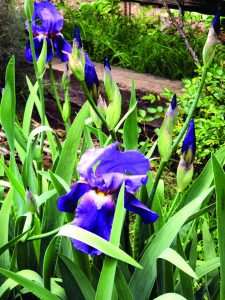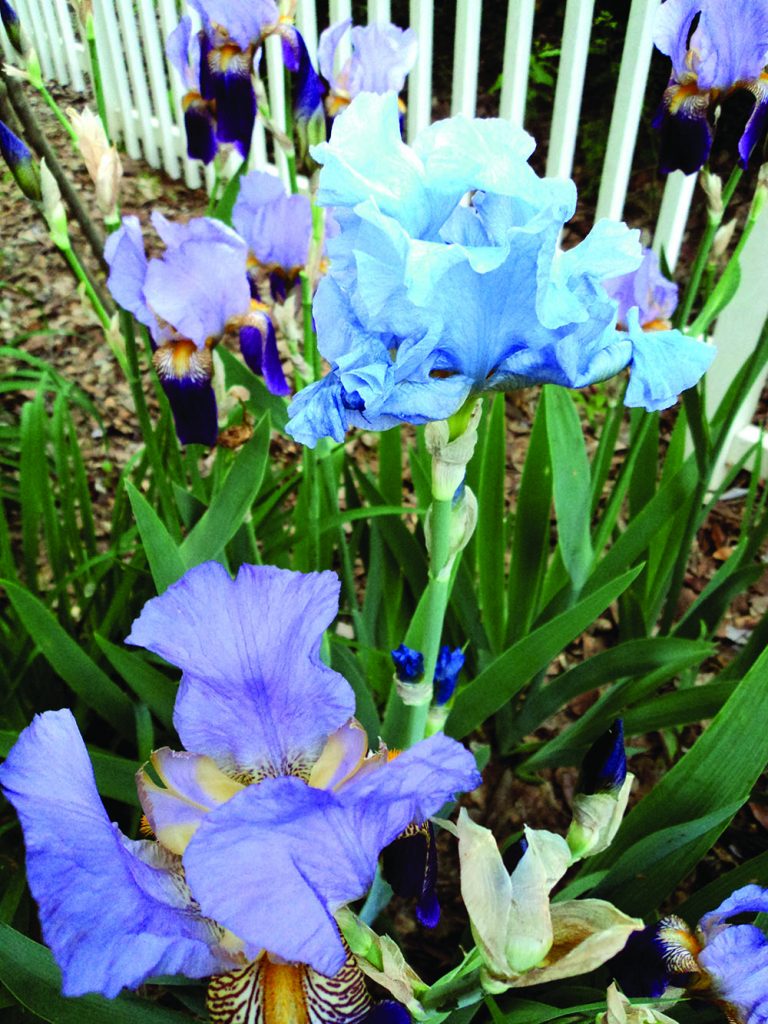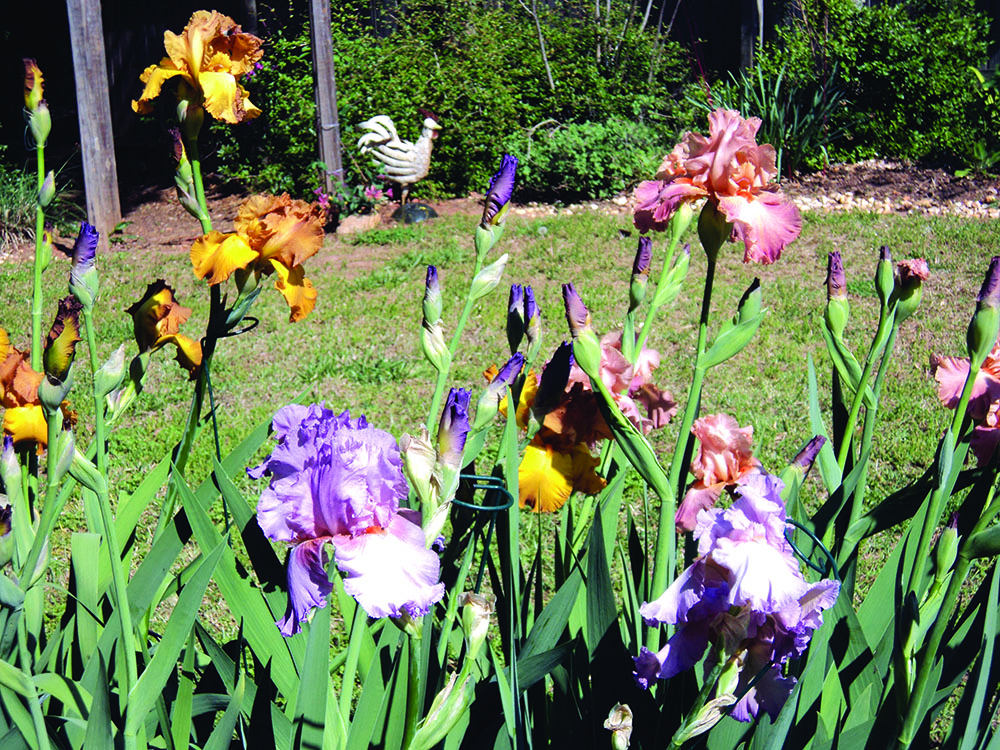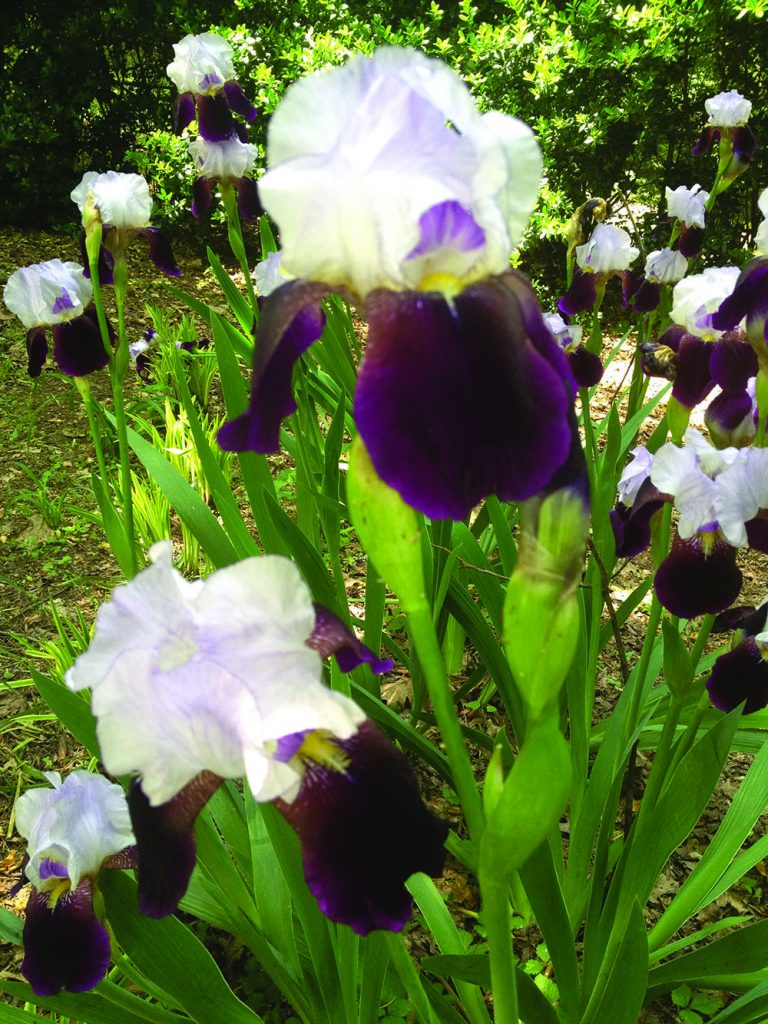Like most gardeners, I have many happy moments in the garden and frustrating ones, too! My love of the Bearded Irises allows for happy reflection on my garden past and makes me long for the first blooms of this coming spring. Their rainbow of color reminds me of my grandmother, my mom and the love we shared for this plant. In my younger years, we would divide and pass along old and new rhizomes from our gardens. How I wish those days were still here!

Tall bearded irises (Iris germanica) are probably the flowers of the ages, and the most common iris that we usually grow in our gardens. There are others, smaller bearded irises that can also help create a stunning display. In general, the shorter the iris, the earlier it blooms. The combination of both tall and short gives a couple months of total bloom time. Their endless array of colors and sizes makes them a versatile and show-stopping element of any garden. And they are loved by many because they are easy to grow, deer-resistant (toxic), multiply each year, and many are rebloomers. They are hardy in zones 3 – 10 and generally grow happily anywhere they have plenty of sun and decent drainage. Not only do they look wonderful in our gardens but make terrific cut flowers. It´s no wonder that they have been so popular for so long.
And as history goes, when Egypt conquered Syria, the king found irises growing in abundance and introduced them to his garden. They soon became very popular and were regarded by Egyptians to symbolize both the essence and renewal of life. The three petals of the flower were thought to stand for faith, wisdom and valor. And when given as gifts convey deep sentiments.
Iris also means ´rainbow´ in Greek. And Iris was the name of the Greek goddess of the rainbow.
My favorites are ´historic´ bearded irises or ´vintage´ that can be hundreds of years old usually found in old cemeteries, historic gardens, vacant lots or passed along for many generations. They tend to be smaller and less ruffled than newer cultivars, but they are tough and often more fragrant. My deep purple and blue tall bearded irises come from my childhood home and have a sweet, almost fruity fragrance.
Upon first glance you might think that the bearded iris has six petal, it actually only has three. The three petals oriented upwards are the only true petals of the iris flower. The petals oriented downward are sepals, sometimes called falls where the beard is located. That is the fuzzy little appendage of the flower that gives them their name.
Bearded irises are easy to grow and desire little attention if planted in well-drained soil with 6 to 8 hours of sunlight. They particularly do well on slopes and raised beds. When planted the tops of the rhizomes which are actually horizontal stems should be visible… spread the attached roots below the soil. Common mistake is planting the rhizomes too deep resulting in few or no flowers. Plant additional plants 12 inches or more apart allowing room to spread. Be sure to divide after 3 to 5 years to keep them blooming and to pass along to friends.
If you have not fertilized them yet, you should do so now with a low nitrogen fertilizer 6-10-10. In general you should fertilize 6 to 8 weeks before blooming and again after the blooms are gone. Phosphate is very important to them, so a little bone meal can be beneficial unless you have a dog…they love it! Cut back flower stems when finished blooming to help promote energy for next- year-flowers. Keep the rhizomes free of debris and mulch so there is no problem with moisture build up that can cause diseases or rot.
Following a few simple rules: lighten up the soil, give them space, divide, feed, keep them tidy and pass them along, will keep your irises beautiful for generations to come. And, noting the meaning of the Greek word ´iris´, you will have a rainbow of colors, too.♣




